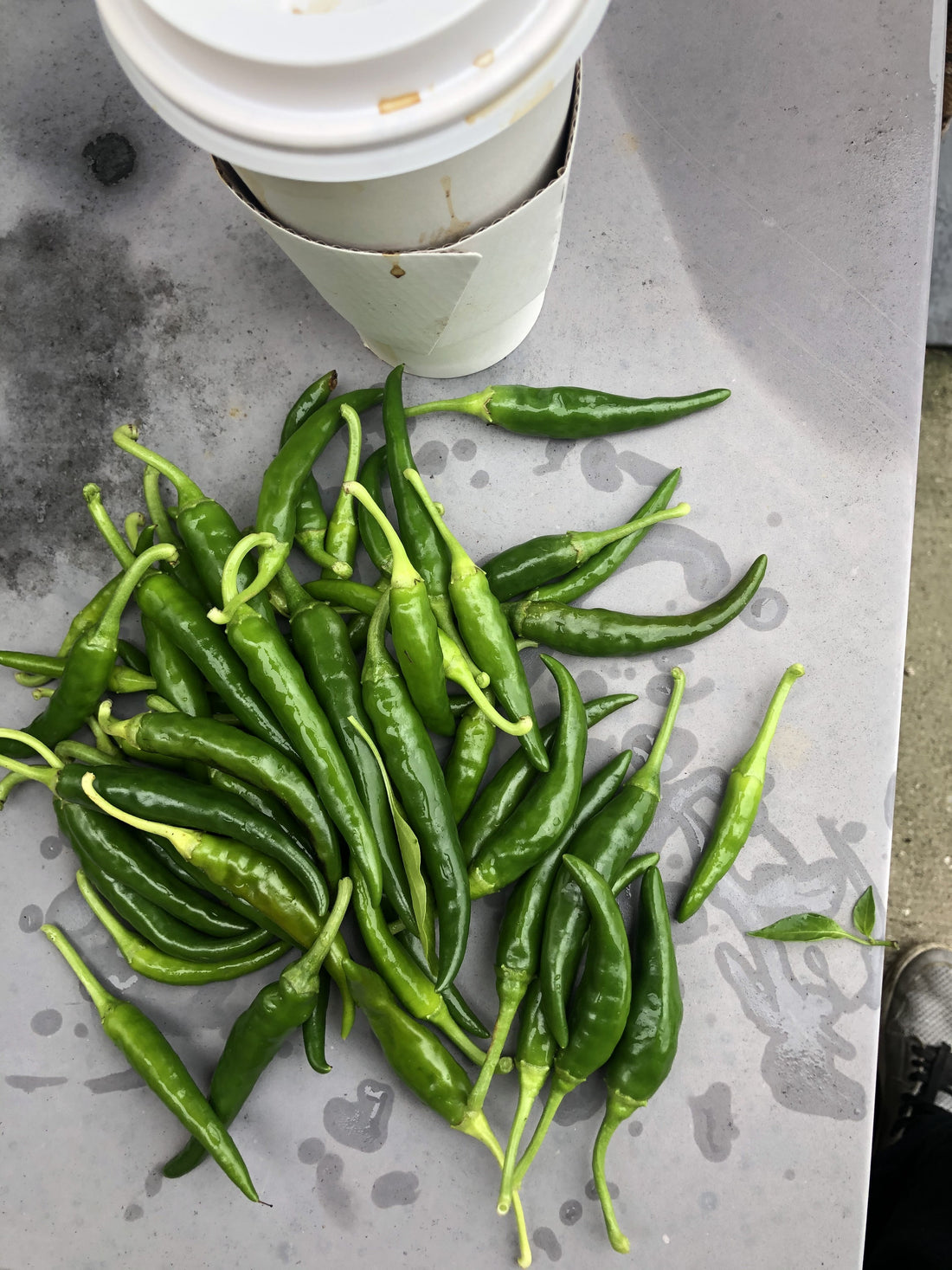
How to Grow and Harvest: Peppers (Hot & Sweet)
Since peppers grow from a flowering plant and contain seeds, they are technically a fruit.
Growing:
All pepper plants require warm soil to germinate, they also require full sunlight so be sure to plant them in your garden where they are going to get the most sun exposure. Be sure to till the soil before planting as well to create more aeration of the soil. You’ll want to use compost and soil as your planting mixture, but make sure that the mixture is not too nitrogen rich. It is true that pepper plants love nitrogen and it helps make them grow very quickly, but it sometimes can accelerate their growth too much causing less yield and increasing susceptibility to disease. It is best to plant your peppers in the evening or on a cloudy day to avoid shock to the plant. Peppers like to grow tall, similar to tomato plants so putting cages or providing them with a vertical trellis will help encourage their strong stem growth.
Watering:
Keep the soil thoroughly moist, your pepper plants should be receiving a minimum of one inch of water per week. During hot weeks or days be sure to monitor the plants closely as some individual pepper plants can require up to a gallon of water per day ,they love drinking their water. You may want to apply a light layer of mulch to your garden to trap in the moisture, but make sure to do this when the soil is warm. You will want to trap in the soil heat to produce more growth on your pepper plants.
Pests/Diseases:
Peppers that are low in calcium tend to develop rot at the end of the vegetable once they are ready for harvest. They may also develop wilted or crinkled leaves - this is a sign that your pepper plant needs more calcium. Flower drop: Don’t worry too much if your flowers begin to wilt, this can be caused by many factors including heat, under or over watering, lack of pollination or a pest infestation.The most common pests for pepper plants are Aphids, Slugs and snails. There is a simple fix to this, just spray your plants with Neem oil when you see the marks of these pests appear.
Harvesting:
Pinch off any blooming flowers that pop up early on in the season. This may seem counter intuitive, but will instead guide the plant to put its energy into producing the vegetable rather than blooming flowers. This will ensure that you receive many larger peppers later on in the season rather than a few small peppers early on. It is best to cut off your peppers from the plant to avoid disturbing the plant too much. Take a sharp knife or scissors and cut the pepper off from the stem about 1-2 inches above the top of the pepper itself.
HOT:
Growing hot peppers can be a challenge for even the most seasoned gardeners. What makes these peppers hot? A chemical compound is created in the pepper capsaicin. This compound is responsible for stimulating nerve endings in the peppers skin causing them to get spicy. The more capsaicin a pepper has, the spicier it is.
Adding lime or bone meal to your soil mix can help to stabilize the plants when they are added to your garden. It is suggested that you sprinkle bone meal in the soil around your pepper plants once every 4 weeks during the season as they tend to soak up most of the calcium available from the soil mix.
Hot pepper plants tend to attract flea beetles, simply spray the plant with a solution of 1 cup of rubbing alcohol, 2.5 cups of water and 1 tablespoon of liquid soap.
Peppers are ready once they have reached a length that spans about half of your forearm. Another indicator of hot peppers being ready for harvest is their color. During their growing period they will remain green until they are within the week they should be picked, they will begin to turn the color they were advertised as (light green, red etc).
Peru is said to have the most diversified variety of hot pepper in the world. That is because this area of South America is where all 5 main hot pepper species were grown and cross pollinated. There are more than 400 varieties of hot peppers globally. Try making a summer salsa using your hot peppers as the base!
SWEET:
Sweet peppers are a great addition to your garden, especially for some colorful variety. There are 9 kinds of sweet peppers for you to choose from when planting your garden. Bell peppers alone come in green, orange, red, yellow and purple! All offering a slightly different, unique pepper flavor.
Sweet peppers are most susceptible to root rot when they are over watered and not receiving enough sunshine or are planted in poor draining soil. The roots of this plant are not too deep, so to avoid root rot it is best to water frequently in smaller quantities.
Choosing when to harvest bell peppers is up to you. The longer you leave them, the sweeter they will become. It is best not to pick your peppers until they have begun to turn the color they were advertised as. If you like the taste of a green pepper but did not plant them, you can pick the other varieties of sweet peppers before they change colors to get a flavor that is most similar to a green pepper.
Why eat a bell pepper? They are packed full of Iron, Potassium, Vitamin A & C and fiber! Bell peppers are also the only type of pepper that does not produce capsaicin. Try a recipe for stuffing peppers, my personal favorite is with a ground beef and cheese stuffing!